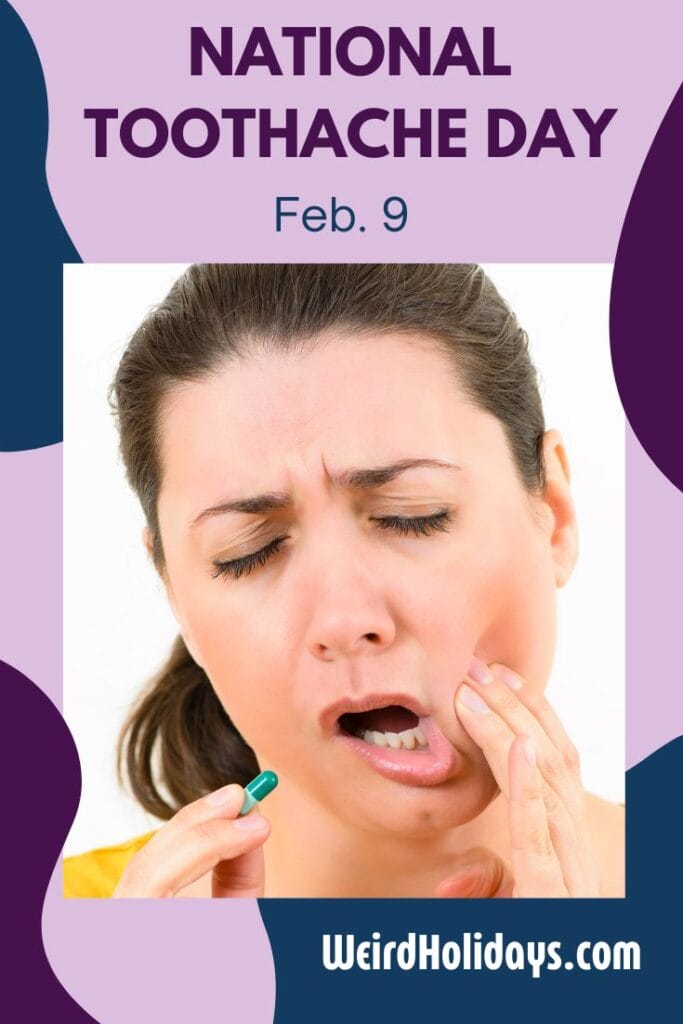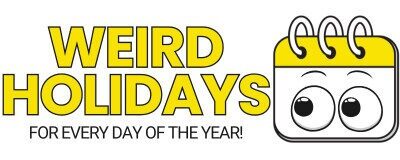National Toothache Day (February 9)

Observed every February 9, National Toothache Day might sound peculiar, but it’s an excellent reminder to prioritize oral health.
Whether you’re learning about the history of dentistry or finding ways to prevent toothaches, this unique February holiday offers plenty of intriguing ways to celebrate.
When is the Holiday?
National Toothache Day is celebrated on February 9th every year. This quirky date encourages dental awareness while giving a nod to the history of oral care.
Who Invented It?
Though its exact origins are unclear, the holiday likely emerged as a creative effort by dental associations or public health campaigns.
By focusing on toothaches, the holiday draws attention to oral hygiene’s role in overall health—a concept that has gained traction over centuries.
The History of the Holiday
Toothaches have been an issue for humans since the dawn of time, with archaeological evidence showing that even Neanderthals suffered from dental problems.
Early remedies were rudimentary and often painful, relying on extraction using crude tools or herbal poultices to alleviate discomfort.
Dentistry as a profession began to formalize in ancient civilizations. The Egyptians, known for their innovations, had dental specialists as far back as 2500 BC.
They used materials like honey and resin to create rudimentary fillings, and ancient texts describe treatments for abscesses and gum disease. Similarly, the ancient Greeks and Romans advanced dental care, with Hippocrates and Galen writing about oral hygiene and tooth-pulling techniques.
The 18th century marked a turning point with Pierre Fauchard, a French surgeon widely regarded as the “Father of Modern Dentistry.” His influential book, The Surgeon Dentist: A Treatise on Teeth, introduced the concept of dental fillings, oral hygiene practices, and the connection between sugar and tooth decay.
Fast forward to the 19th century, the formation of the American Dental Association (ADA) in 1859 standardized practices and elevated dentistry’s professional status. Innovations like the first mass-produced toothpaste by Colgate in 1873 revolutionized daily oral hygiene.
Interestingly, the modern emphasis on oral health didn’t gain widespread cultural importance in the U.S. until after World War II.
Soldiers returning home brought with them lessons from abroad, and public health campaigns began to stress the importance of brushing and flossing to prevent tooth decay and toothaches.
The creation of National Toothache Day ties into this historical narrative, serving as a reminder of the importance of dental care and the progress made in preventing toothaches.
It also humorously highlights what happens when oral health is neglected, adding a lighthearted twist to an otherwise serious topic.

Top 5 Facts About the Holiday
- The term for tooth pain is “odontalgia.”
- Dentistry dates back to 7000 BC.
- Pierre Fauchard is known as the father of modern dentistry.
- Toothpaste became widely available in the late 1800s.
- National Toothache Day emphasizes preventing toothaches rather than enduring them.
Activities to Celebrate
- Book a Dental Check-Up: Take the opportunity to schedule a check-up for you or your kids, ensuring your oral health is on track. Use this time to ask your dentist for personalized tips to prevent toothaches.
- Teach Children About Oral Hygiene: Engage kids with fun games, printables, or hands-on activities like a brushing chart or a model mouth they can “clean.” These can make oral care routines more exciting and memorable.
- Explore Natural Remedies and Dental History: Research traditional remedies for toothaches or dive into the fascinating history of dentistry. Try recreating an ancient dental technique (safely!) to connect with the past.
- Switch to Zero-Waste Dental Products: Make a positive environmental impact by trying biodegradable toothbrushes, toothpaste tablets, or homemade natural tooth powders. Discuss with your family how sustainable choices benefit the planet and oral health.
- Create a Dental-Themed Craft: Encourage creativity with tooth-shaped crafts or DIY projects, like decorating a tooth fairy box. It’s a fun way to emphasize the importance of taking care of your teeth.
- Host a Tooth-Friendly Snack Challenge: Get the family involved in creating delicious, tooth-friendly recipes, focusing on low-sugar and calcium-rich options to promote strong teeth.

**This post may contain affiliate links. As an Amazon Associate and a participant in other affiliate programs, I earn a commission on qualifying purchases.**
Links to Resources
- Best selling maximum strength oral pain relief gel: Discover highly rated, fast-acting gels that provide targeted relief for toothaches and gum pain. These over-the-counter options can help soothe discomfort until you can see a dentist.
- Printable brushing charts: Make oral hygiene fun for kids with customizable brushing charts. These visual aids help track morning and evening routines while encouraging independence in dental care.
- Home remedies for toothaches: Learn about natural, at-home solutions like clove oil, saltwater rinses, and ice packs to alleviate pain and swelling. Perfect for temporary relief while awaiting professional treatment.
- Dental health worksheets: Boost your child’s understanding of oral hygiene with engaging, educational worksheets. These activities explain the importance of brushing, flossing, and visiting the dentist.
- Dental health color by number sheets: Combine creativity and learning with color-by-number activities that highlight healthy teeth, gums, and oral care practices. A perfect blend of fun and education for younger kids.
- Soft foods after oral surgery: Explore a comprehensive list of soft, nutrient-rich foods to eat after dental procedures. Ideas include smoothies, mashed potatoes, soups, and yogurt to keep you nourished while protecting your teeth and gums during recovery.
Related Holidays
- National Dentist’s Day (March 6)
- Kiss Me Day (August 27)
Pin it!
Share this post about toothaches and cavities on Pinterest!

